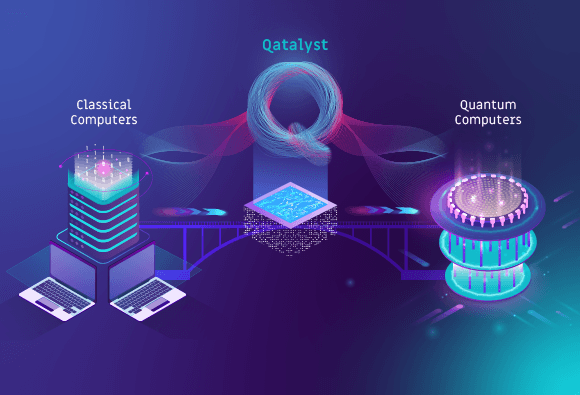We all know that quantum computing hybrids will be the dominant configuration for extracting quantum value in many applications and use cases. As we have noted before, it’s not a question of classical vs quantum. It’s a question of how to best harness the upside power of each of these processing architectures to achieve the optimum value.
Most quantum experts believe that a hybrid approach will be the solution of choice for optimization as well as other computational applications and use cases. This means that the first uses of quantum will be in a hybrid architecture, which accelerates quantum availability and potentially quantum advantage, ahead of pure quantum computing applications.
What is Hybrid Quantum Computing?
Hybrid quantum computing is the industry term that means a quantum computer and a classical computer are working together to solve a problem. I always find it interesting since, in reality, you will always have a hybrid architecture given that you need a classical computer to be able to run a quantum computer. Classical computers are the “front end” to a quantum system.
In the industry, a hybrid refers to shared processing of a computation, simulation, or other solution. In this case, the two system types iterate processing, may share results, and are working together to find the solution you need.
There are a variety of ways you can think about a hybrid. Here are two examples.
Classical pre- and post-processing, quantum computations
In this hybrid, a classical computer performs some form of preprocessing ahead of the problem being submitted to a quantum system.
For example, a classical system could contain the problem set (data) for a computation. Analyzing the problem set of data defines the partitions or subsets of the data that best reflect the overall problem. Mathematically pre-processing these subsets of data creates a series of smaller problems a quantum computer can process.
The smaller problems are modeled and then submitted to the quantum computer for iterative processing. The classical system analyzes the solutions returned from the quantum system, analyzes them, determines the best results, and returns those results to the submission.
This hybrid helps solve the limitation of quantum computing, caused by current systems’ small size and inability to ingest or process the number of variables, aka data, that real-world problems require.
Shared classical and quantum processing
This hybrid uses both types of computers to solve the problem. We see this as a target architecture for optimization computations. Classical computers do a good job of solving optimizations when the problem set is more “sparse,” meaning the data matrix is not fully populated across every single field. Classical systems are excellent at this type of operation.
This said, when the data matrix is “dense,” meaning the potential fields are heavily populated so the matrix is complex, classical systems bog down. This is where quantum computing shines since these systems process such complex data matrices in a multi-dimensional manner.
Analyzing the problem set identifies the data partitions that are sparse, vs. the denser areas, directing them to different processors for computation, based on whether a classical or quantum system can best process the data.
Each system is directed to compute the optimization on a specific part of the data, and the results are iterated between them, as well as within their own processing. Then the results are analyzed, and the best solutions returned as insights for the organization.
This approach empowers both the quantum computer and the classical computer to do what each is good at doing – so you get the best out of each architecture and better results overall.
The Bottom Line
Hybrid quantum computing will deliver the first instantiation of quantum value for most organizations. The key to optimum results is understanding the best methods for allowing both systems to interact with each other and with the algorithms they are computing.
Hybrids will represent the majority of quantum computing for the foreseeable future. Thanks to the availability of both quantum and classical processors on the cloud, we’ll be able to submit problems, receive our answers, and never really know which type of processor did what work for us.
You’ll simply receive better results.


